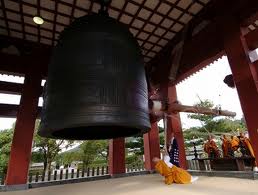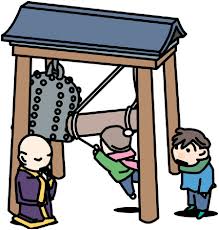More in common than you might think!
Soon after beginning to study sake, one comes to realize there are many varieties of sake
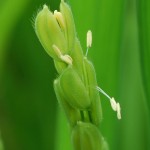 rice. And while not all sake is made from “official” sake rice (and it is a legal definition – as compared to “regular” rice for eating), most premium sake is indeed brewed from one of the hundred-odd strains of sakamai, or sake rice.
rice. And while not all sake is made from “official” sake rice (and it is a legal definition – as compared to “regular” rice for eating), most premium sake is indeed brewed from one of the hundred-odd strains of sakamai, or sake rice.
Note this does not mean that without proper sake rice one cannot make good sake. It is, actually, quite possible to make decent sake with run of the mill regular rice. But it is just much, much easier to make good sake from proper sake rice. And in truth, to make the best sake, you must use proper sake rice.
Much like grapes used in wine, while there are many varieties of sake rice out there, if you know about a dozen, you will know most of the rice varieties you will encounter. And rice varieties do contribute greatly to the flavors of the final sake, not surprisingly. However, the connection between rice and final sake is not nearly as tight as the connection between grape varieties and the final flavors in a wine.
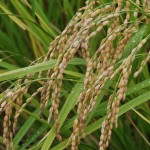 This is, methinks, an important point. Sake rice leads to sake flavors; yes. However, as important as good rice is, it is but half the battle. Just how the rice is handled – milled, soaked, steamed, propagated with mold, coaxed via temperature et al along a particular fermentation path – will have a huge amount of say in determining the nature of the final sake.
This is, methinks, an important point. Sake rice leads to sake flavors; yes. However, as important as good rice is, it is but half the battle. Just how the rice is handled – milled, soaked, steamed, propagated with mold, coaxed via temperature et al along a particular fermentation path – will have a huge amount of say in determining the nature of the final sake.
As a very simple example, the same Yamada Nishiki rice milled to the same 40%, for example, might go to two brewers. One would let it absorb more water, thereby helping it dissolve more quickly in the fermenting mash, thereby leading to a richer, broader, heavier flavor than the other. Or, one might have more koji mold propagated upon it, thereby dosing it with more sugar-creating enzymes, thereby enabling the yeast to go on a feeding frenzy, leading to a significantly drier sake. So the process itself contributes so much to the final sake. It is about much more than just the rice, although that is important as well.
I often liken it to coffee beans, and making coffee.
~~~~~~~~~~~~~~~~~~~~~~~~~~~~~~~
Coffee is my second favorite liquid on the planet, with pure water beinga d-i-s-t-a-n-t  third. Kind of the yang to sake’s yin in my daily life. And it recently struck me that good coffee beans are to good coffee as good sake rice is to good sake.
third. Kind of the yang to sake’s yin in my daily life. And it recently struck me that good coffee beans are to good coffee as good sake rice is to good sake.
In other words, to make good coffee, you need to start with good beans. These will come from one of a handful of good growing regions. And each of the major varieties of coffee beans will have its own main characteristics: some are more acidic than others, some are fuller and richer. But the bean alone does not the coffee make!
We can start with the same coffee beans and end up with a very wide range of coffees. For example, beans can be lightly roasted, more thoroughly roasted, or mercilessly charred. This will lead to light coffee, richer coffee, or charred-flavor coffee.
On top of that, one can use an espresso maker, or drip press the coffee.
 And even among those two extremes – and everything in between – there are little choices and decisions, like the water temperature (too hot, or just right?) or one-holed or three-holed cones. There is no one right decision; rather, each choice will lead to a different taste in spite of having started with the same beans. Even before that comes into play, bear in mind the grind: a find grind and a coarse grind will affect things massively as well.
And even among those two extremes – and everything in between – there are little choices and decisions, like the water temperature (too hot, or just right?) or one-holed or three-holed cones. There is no one right decision; rather, each choice will lead to a different taste in spite of having started with the same beans. Even before that comes into play, bear in mind the grind: a find grind and a coarse grind will affect things massively as well.
So, you have the roast, the grind, the method, the machine, the water temperature, the apparatus, and the “touch” of the person making it all. You can start with good beans, but you have to do everything else right too. And what is right is not set in stone either. Very often, what one “master” considers anathema is precisely what makes another’s coffee so good. Go figure!
With good tools and methods, you can make a decent cup of coffee with mediocre beans. 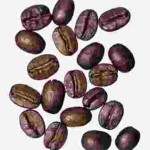 However, it is much, much easier to make good coffee if you start with good beans. And, to make the best coffee, you must start with good beans. And therein lies the connection between good sake and sake rice.
However, it is much, much easier to make good coffee if you start with good beans. And, to make the best coffee, you must start with good beans. And therein lies the connection between good sake and sake rice.
Restating: It is possible to make decent sake with run of the mill regular rice. But it is just much, much easier to make good sake from proper sake rice. And in truth, to make the best sake, you must use proper sake rice.
~~~~~~~~~~~~~~~~~~~~~~~~~~~~~~~
Sake rice’s tenuous connection to its soulmate, the coffee bean, notwithstanding, the above might naturally give rise to the question, with all the manhandling of the rice, and the variations used in brewing methods, it it possible to assign “typical” flavor profiles to rice types, and is it possible to identify them in blind tastings like wine grapes?
The answer is yes, it is possible, but not with great accuracy, and it does take a bit of experience. I recall a tasting put on by the Japan Agriculture Co-Op of Okayama Prefecture, wherein we tasted about 100 Yamada Nishiki-based sake, followed by about 100 Omachi-based sake, from all over Japan. What they had in common was that the Yamada Nishiki and Omachi used were both grown in Okayama. After tasting one hundred sake made from one rice, you got a feel for that rice. Then moving on to the other rice was like entering a totally different universe.
However, if I had just one or two of each, and was asked “which is the Omachi, and which is the Yamada?,” it perhaps might have been more difficult.
So yes, the rice-to-sake connection is there; but no, it is not as tight as the grapes-to-wine connection. And yes, the rice is massively important in making great sake. But no, it is not the only factor involved. As is usually the case in sake-related topics, it is delightfully vague.





